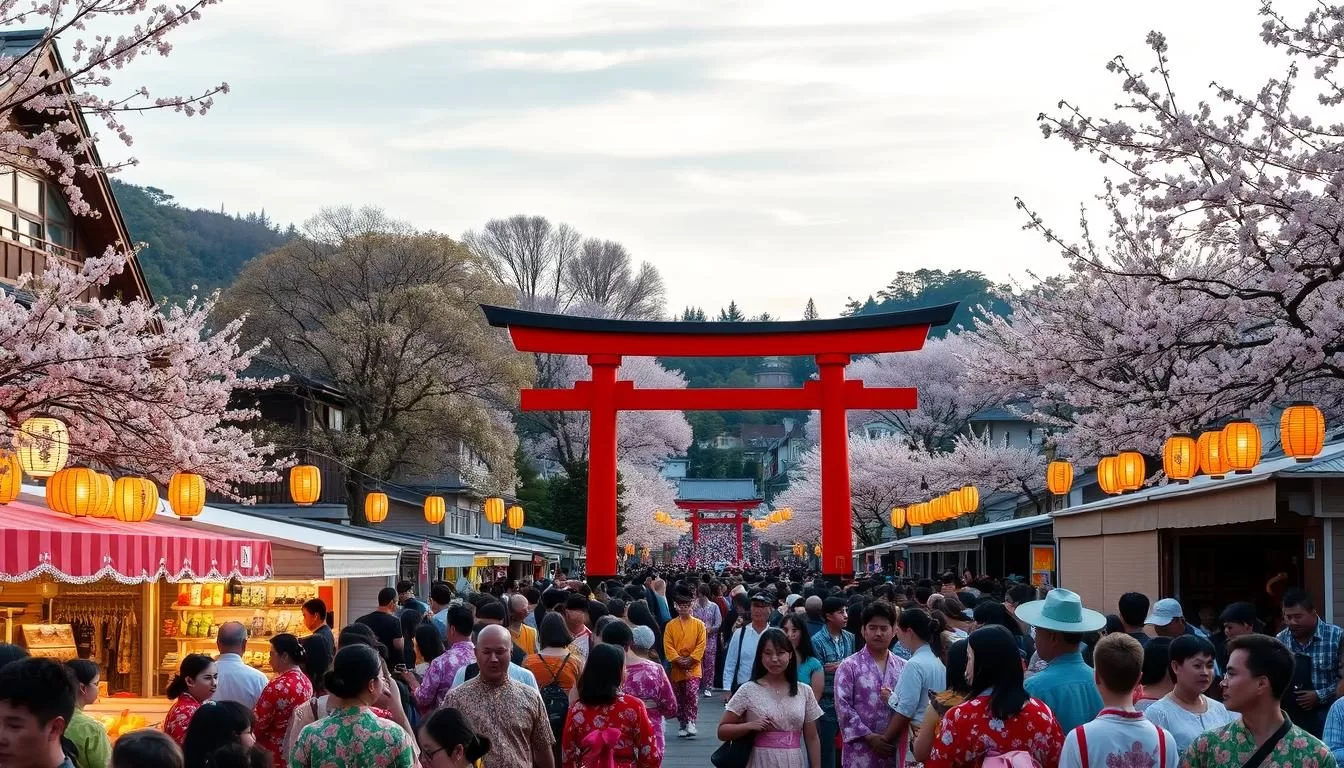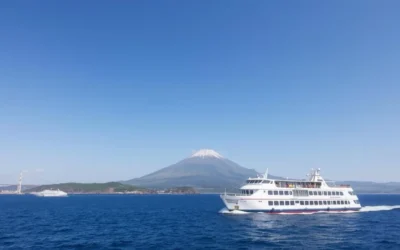✓ Accommodations✓ Flights✓ Rental Cars
Experience the vibrant festival culture of Wakayama Prefecture, a region steeped in traditions and celebrations that showcase authentic Japanese culture throughout the year.
Festivals are deeply rooted in Japanese culture, often centered around nature, whether it’s a plea for it to settle down or to show gratitude for its natural gifts. Japan’s four distinct seasons offer a unique backdrop for these celebrations, making them a must-experience when visiting.
By joining a festival, you’ll gain a deeper understanding of the local culture and create unforgettable memories. This guide will help you prepare for your journey to Wakayama Prefecture, highlighting the most significant and enjoyable festivals that showcase the region’s cultural heritage and natural beauty.
The Cultural Significance of Festivals in Wakayama Prefecture
Wakayama Prefecture’s festivals are not just celebrations; they are a bridge to the region’s past, present, and future. These events are deeply rooted in the region’s history and culture, often centered around nature, whether it’s a plea for it to settle down or gratitude for its gifts.
Festivals in Wakayama serve as living museums of Japanese cultural heritage, preserving traditions that date back hundreds of years. They strengthen community bonds and serve as important social gatherings that unite locals and welcome visitors throughout the year.
| Aspect | Description |
|---|---|
| Cultural Significance | Preserves Japanese heritage and traditions |
| Community Building | Unites locals and welcomes visitors |
| Spiritual Connection | Rooted in Shinto and Buddhist traditions |
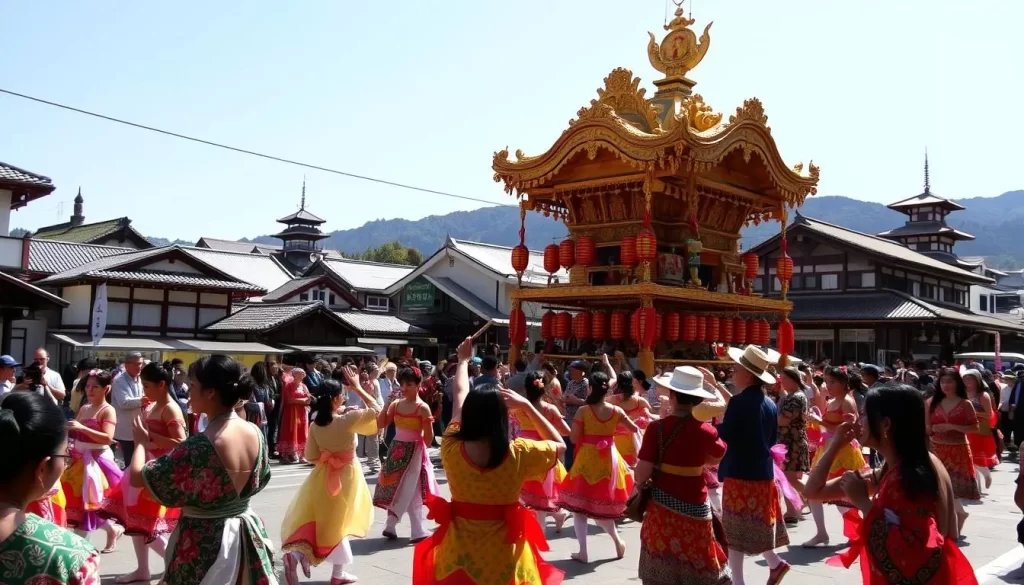
By experiencing these festivals, you gain insight into Wakayama’s unique cultural identity and its harmonious relationship with the natural world.
Wakayama Prefecture: A Brief Introduction
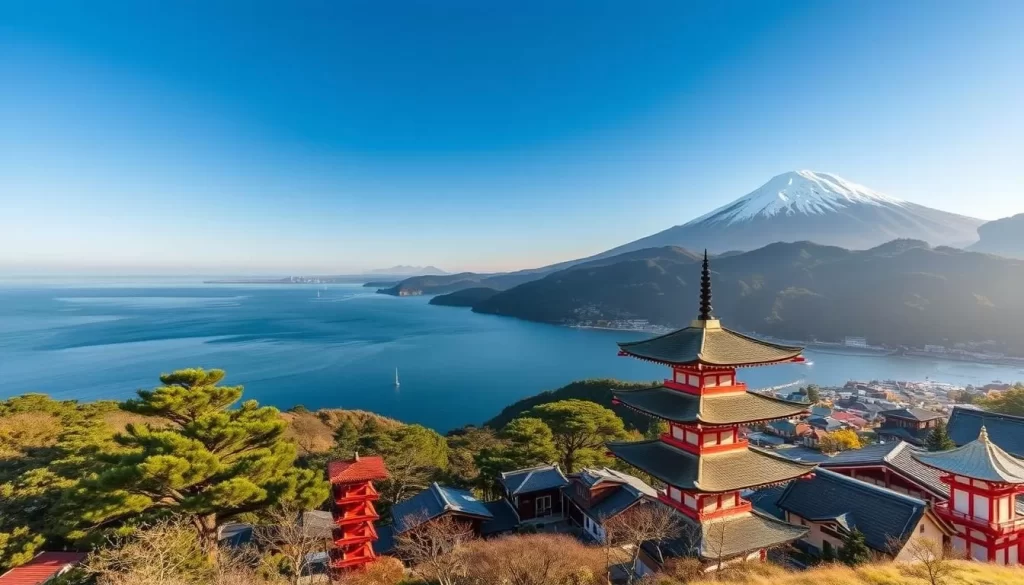
Nestled on the Kii Peninsula, Wakayama Prefecture is a hidden gem that showcases Japan’s deep-rooted traditions and breathtaking natural scenery. As a significant cultural and spiritual hub, it boasts a rich history and diverse landscapes that have been preserved over centuries.
Wakayama’s geographical location on Japan’s Kii Peninsula makes it an area of dramatic coastlines, a mountainous interior, and sacred pilgrimage routes. The prefecture is home to Koyasan, or Mount Koya, a sacred mountain town and the center of Shingon Buddhism in Japan, founded in 816 by Kobo Daishi.
The prefecture’s unique cultural identity is shaped by its relative isolation, strong religious traditions, and deep connection to the natural environment, making it a World Heritage site due to its Kumano Kodo pilgrimage routes. With its diverse landscapes, Wakayama provides stunning backdrops for its many festivals, from coastal celebrations to mountain rituals in sacred places.
Spring Festivals in Wakayama
Wakayama’s spring season is a time of renewal and festivity, offering a unique cultural experience. The region comes alive with various festivals that celebrate the arrival of spring.
Cherry Blossom Festivals
Wakayama is renowned for its beautiful cherry blossoms, and the Cherry Blossom Festivals are a highlight of the spring season. These festivals take place in various parks and gardens across the prefecture, offering stunning views of blooming sakura trees.
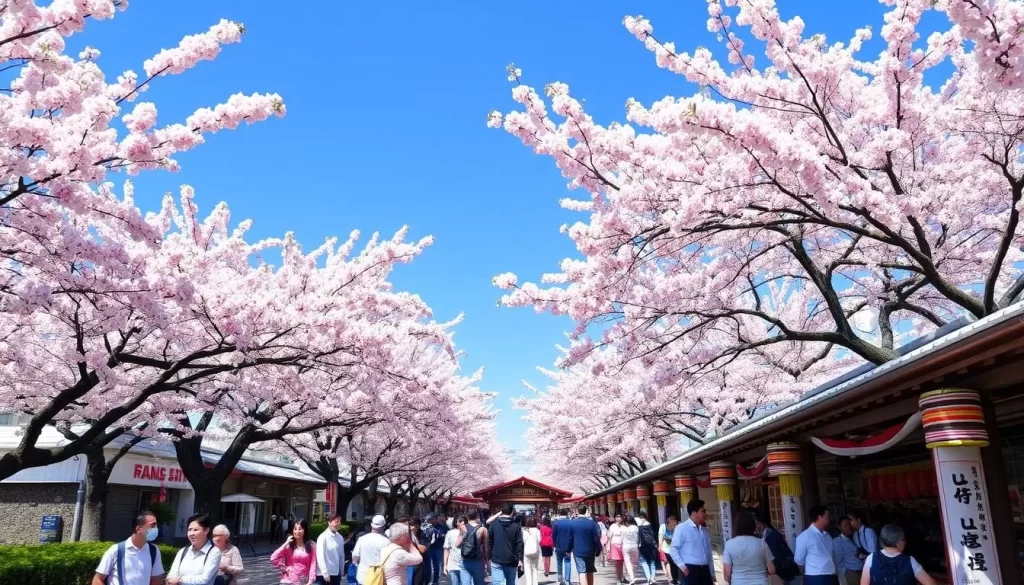
The festivals often include traditional food stalls, live music, and cultural events, making them a wonderful way to experience Wakayama’s spring.
Koyasan Spring Festival
The Koyasan Spring Festival is a unique event that takes place in the sacred mountain town of Koyasan, the center of Shingon Buddhism in Japan. This festival combines Buddhist traditions with the celebration of spring’s arrival.
Visitors can witness monks performing ancient rituals and ceremonies, offering a rare glimpse into the spiritual practices of this sacred place.
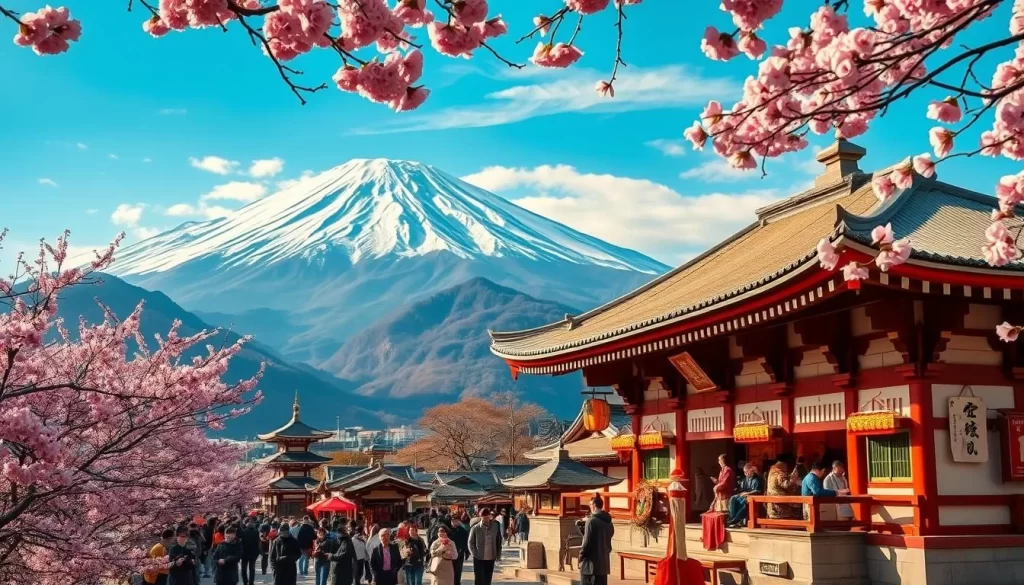
The Famous Nachi Fire Festival
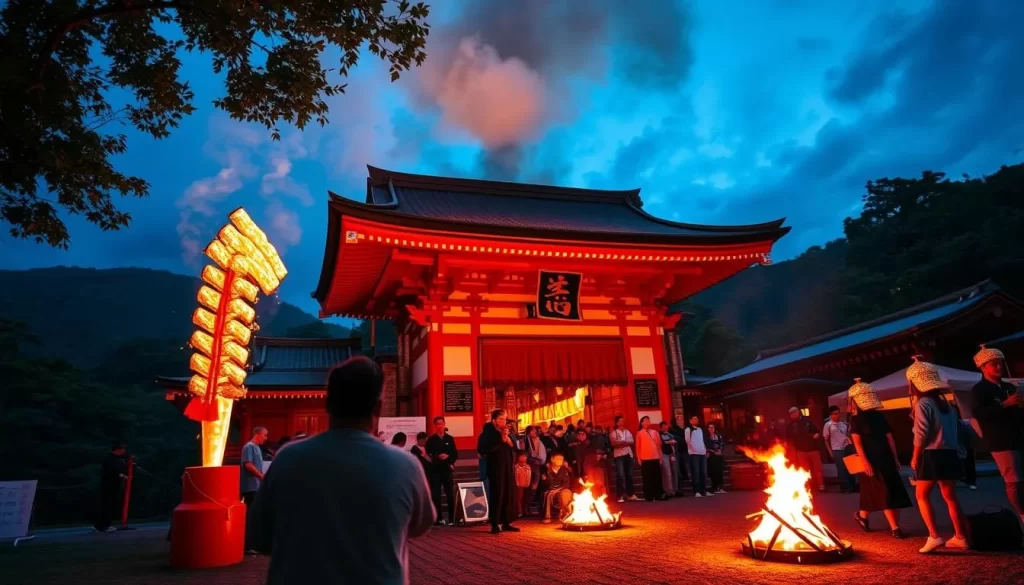
Wakayama’s Nachi Fire Festival is a breathtaking spectacle that combines ancient rituals with natural beauty. Held annually on July 14th at the Kumano Nachi Taisha shrine, this fire festival is a unique experience that showcases Japan’s rich cultural heritage.
The Nachi no Hi Matsuri, as it is locally known, has a history spanning over 1,400 years, making it an ancient ritual that takes place at a UNESCO World Heritage site within Wakayama Prefecture.
- Experience one of Japan’s most spectacular fire festivals, held annually on July 14th.
- Learn about the 1,400-year history of this ancient ritual.
- Understand the symbolic meaning behind the festival, where twelve massive torches are carried down the stone steps.
- Witness the breathtaking spectacle against the backdrop of Japan’s tallest waterfall, Nachi Falls.
- Discover the spiritual significance of fire in this purification ritual.
- Get practical tips for attending this popular event at a world heritage site.
Summer Festivals in Wakayama
As summer arrives in Wakayama, the prefecture comes alive with a variety of festivals that highlight its traditions and natural beauty. The warmth and vibrancy of these events are a perfect reflection of the season, offering visitors a chance to experience the best of Wakayama’s culture and scenery.
Tanabata Celebrations
Experience the magic of Tanabata in Wakayama, a festival that celebrates the meeting of two star-crossed lovers. The city is adorned with colorful decorations, and the atmosphere is filled with the joy and wishes of the participants.

Shirahama Summer Fireworks Festival
The Shirahama Summer Fireworks Festival is a highlight of Wakayama’s summer calendar, featuring a dazzling fireworks display against the backdrop of Shirahama’s famous white sandy beach. Thousands gather to witness this spectacle, which illuminates the night sky over Shirahama Bay.
Visitors can enjoy the festival while relaxing on the beach or unwinding in one of Shirahama’s renowned hot spring baths. The combination of natural beauty, cultural tradition, and modern pyrotechnics makes for an unforgettable summer experience.
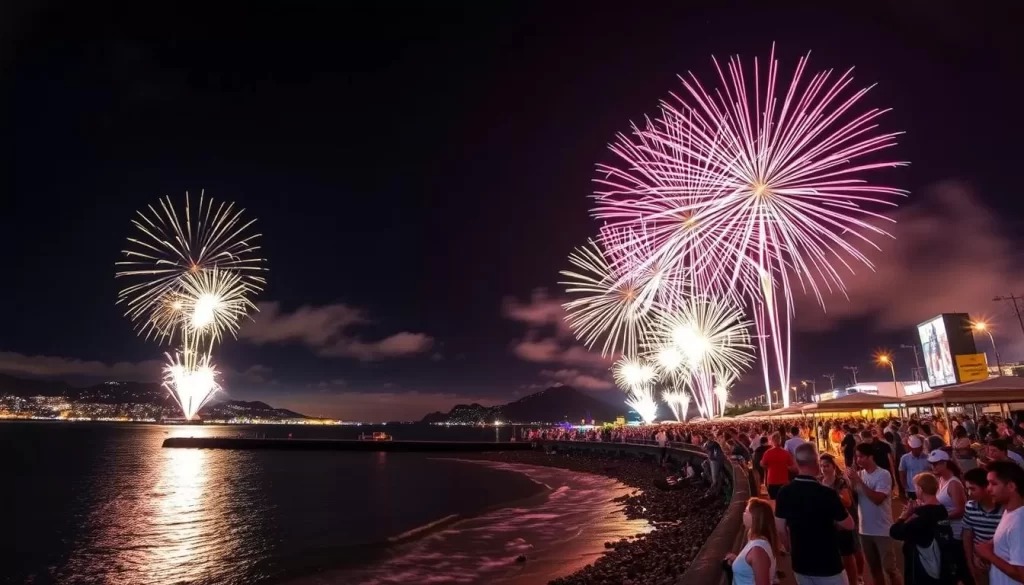
Autumn Festivals in Wakayama
Wakayama’s autumn festivals offer a unique glimpse into the region’s traditions and cultural practices. As the seasons change, the prefecture comes alive with various celebrations that reflect its rich heritage.
Harvest Celebrations
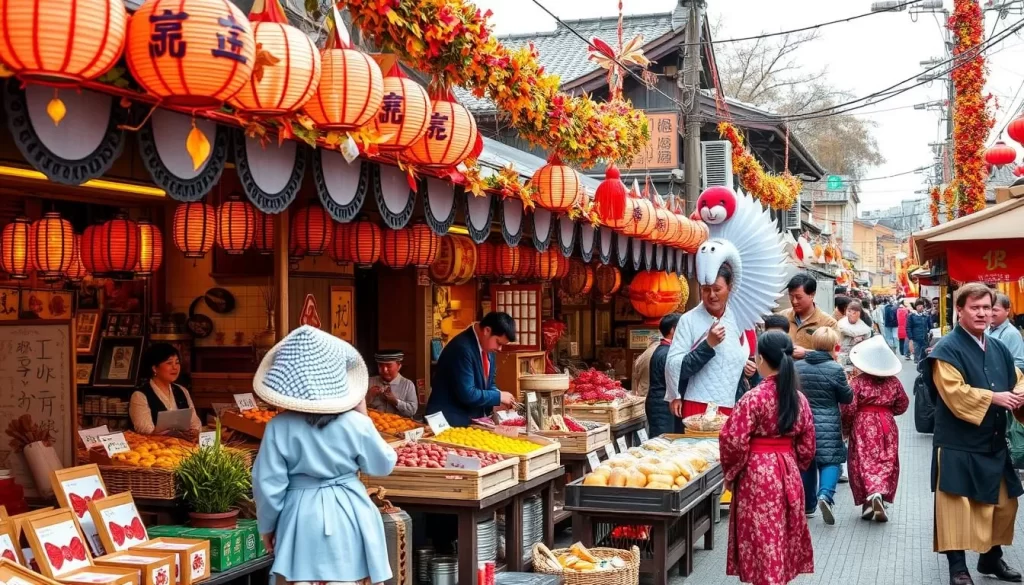
The autumn harvest festivals in Wakayama are a time to give thanks for the season’s bounty. These celebrations often feature traditional dances, local food, and rituals to ensure a good harvest.
You can experience the warmth and hospitality of the local community during these events.
Kumano Kodo Pilgrimage Festivals
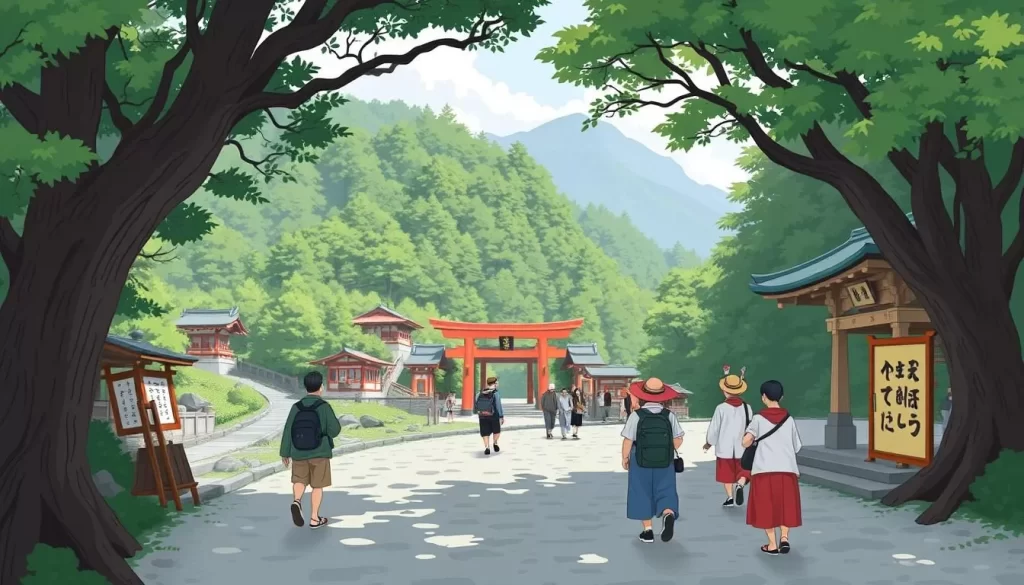
The Kumano Kodo pilgrimage routes, a UNESCO World Heritage site, host special festivals during the autumn season. These festivals combine elements of Shinto and Buddhist traditions, reflecting the unique religious syncretism of the Kumano region.
You can participate in the rituals and ceremonies performed at the three grand shrines of Kumano (Kumano Sanzan) during these special festival days, exploring the rich history and spiritual significance of the area.
By attending these autumn festivals, you can gain a deeper understanding of Wakayama’s history and cultural significance. The festivals offer a chance to connect with the local community and experience the region’s spiritual heritage.
Winter Festivals in Wakayama
During the winter season, Wakayama Prefecture offers a range of experiences, from spiritual New Year festivities to enchanting light displays. As the cold weather sets in, the region’s towns and sacred sites are transformed into magical winter wonderlands.
New Year Celebrations
Wakayama’s New Year (Oshogatsu) celebrations are a significant event, blending traditional Japanese culture with spiritual renewal. Many shrines and temples host special events, including the Namahage ritual, where masked figures symbolize benevolent spirits that bring good fortune to families. Although the most famous Namahage festival is held in Akita, Wakayama has its own unique New Year traditions worth experiencing.
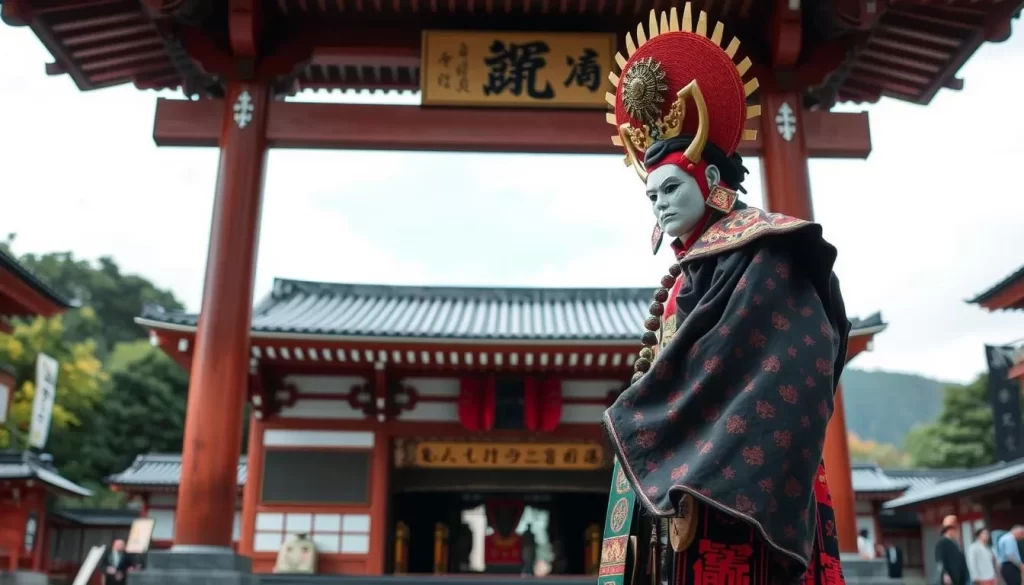
Winter Illumination Events
Wakayama’s winter illumination events are a highlight of the season, turning the region’s landscapes into breathtaking evening sights. From December to February, various towns and sacred sites across the prefecture are adorned with elaborate light displays. These events often incorporate traditional Japanese aesthetics, referencing historical or religious themes, and range from contemporary light art installations to classic lantern displays.
- Discover the magical winter illumination events that transform Wakayama’s towns and sacred sites into wonderlands of light.
- Learn about the timing and locations of these displays, which typically run from December through February.
- Understand how these modern light festivals incorporate traditional Japanese aesthetic principles.
These illumination events create unforgettable evening sights in Wakayama’s towns, making them a must-visit during the winter season.
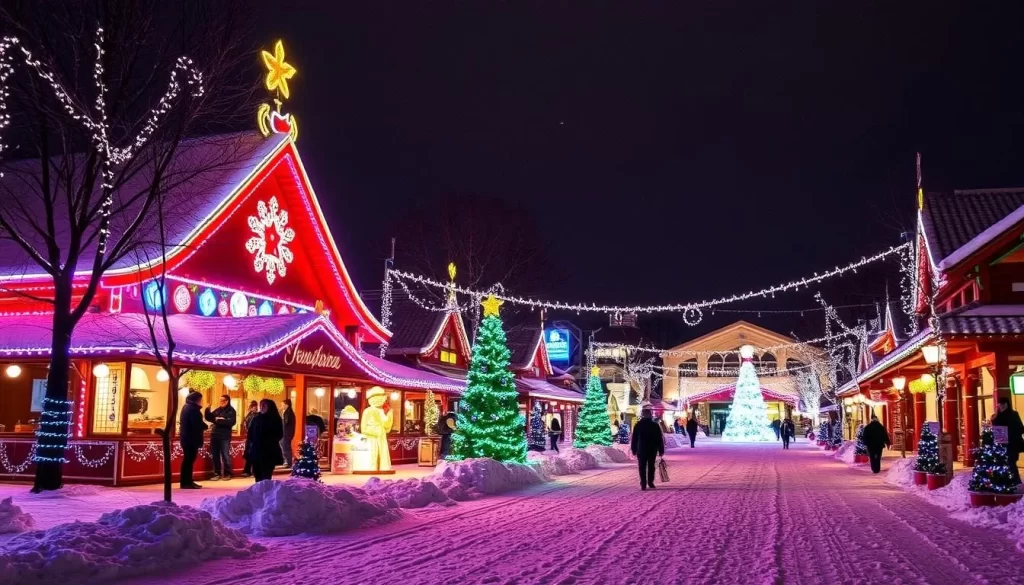
Religious and Spiritual Festivals at Koyasan
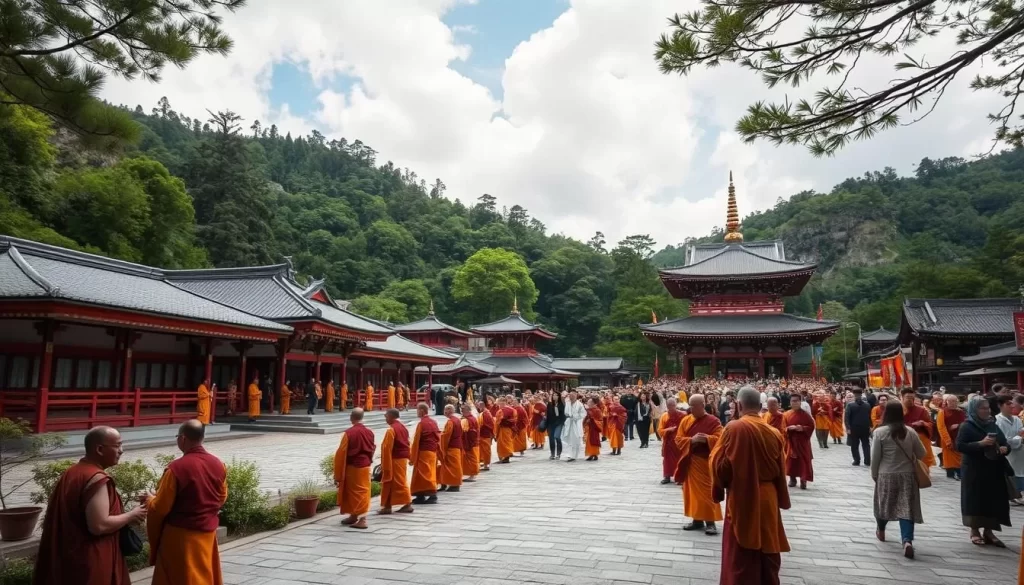
Visitors to Koyasan, or Mount Koya, can experience a range of spiritual festivals that highlight the unique practices and traditions of Shingon Buddhism. Koyasan, Wakayama’s sacred mountain town, is home to over 100 temples, 52 of which are shukubo, or temple lodgings where you can stay overnight and immerse yourself in the spiritual atmosphere.
The religious calendar of Koyasan is filled with special ceremonies that mark important dates in the Buddhist tradition. These spiritual festivals offer a rare glimpse into esoteric Buddhist practices, including fire rituals, sutra chanting, and mandala offerings. Many of these festivals have been performed continuously since Koyasan’s founding by the monk Kukai (Kobo Daishi) in 816 CE, providing a unique historical significance.
As a visitor, you can participate in these festivals and gain a deeper understanding of Shingon Buddhism. It’s essential to be mindful of proper etiquette and behavior when attending these religious ceremonies to ensure a respectful and meaningful experience at this sacred site.
Traditional Folk Festivals of Wakayama
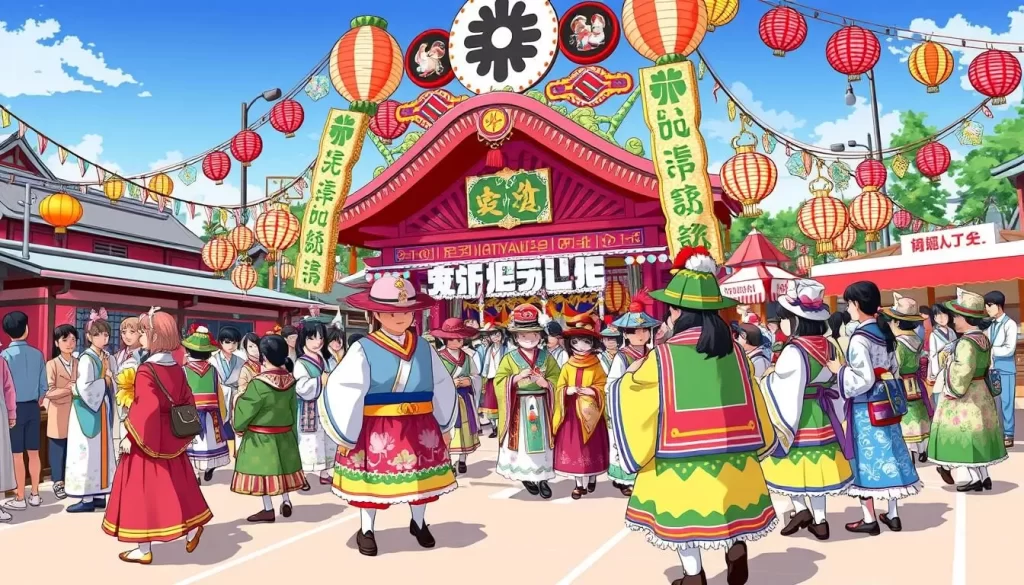
With roots dating back over 400 years, Wakayama’s traditional folk festivals are a living testament to the region’s enduring cultural legacy. You can discover Wakayama’s traditional folk festivals that have been preserved for generations, offering a window into the region’s cultural heritage and rural traditions.
These folk celebrations, some of which date back 400 years or more, reflect the daily lives, beliefs, and values of Wakayama’s people. The festivals often incorporate distinctive local performing arts, including regional variations of dance and performances unique to Wakayama.
The colorful costumes, masks, and props used in these traditional celebrations have been carefully preserved and passed down through generations, adding to the richness and authenticity of the festivals. You can experience these authentic folk festivals that showcase Wakayama’s cultural identity beyond the more famous religious celebrations.
By participating in or attending these traditional folk festivals, you gain a deeper understanding of Wakayama’s cultural heritage and the significance of these events in the daily lives of its people. The traditional folk festivals of Wakayama are truly a treasure to behold.
Food Festivals: Tasting Wakayama’s Culinary Treasures

Wakayama’s food festivals are a culinary journey through the prefecture’s agricultural and marine treasures, offering a taste of authentic local life. Visitors can discover the delicious food festivals that celebrate Wakayama’s rich culinary heritage and locally produced ingredients every year.
The festivals feature Wakayama’s famous agricultural products, including mikan (mandarin oranges) and umeboshi (pickled plums), as well as fresh seafood, giving visitors a true taste of the area‘s bounty.
These food festivals connect you with the agricultural traditions and fishing communities, highlighting ingredients at their peak throughout the every year.
Festival Etiquette: How to Participate Respectfully
Wakayama’s festivals offer a unique window into Japanese culture, and by understanding the etiquette surrounding these events, you can participate with confidence and respect. As a visitor, it’s essential to be mindful of local customs to ensure a positive experience for both yourself and the local community.
When attending a festival in Wakayama, observe and follow the lead of local participants. This is particularly important at religious festivals, where proper conduct at shrines and temples is crucial. Be respectful during ceremonies and aware of your surroundings.
Photography etiquette is also vital. Be aware of when it’s acceptable to take photos and when to put your camera away out of respect. Understanding the concept of “reading the air” (kuuki wo yomu) in culture will help you be more attentive to the atmosphere and behavior of those around you, enhancing your overall festival experience.
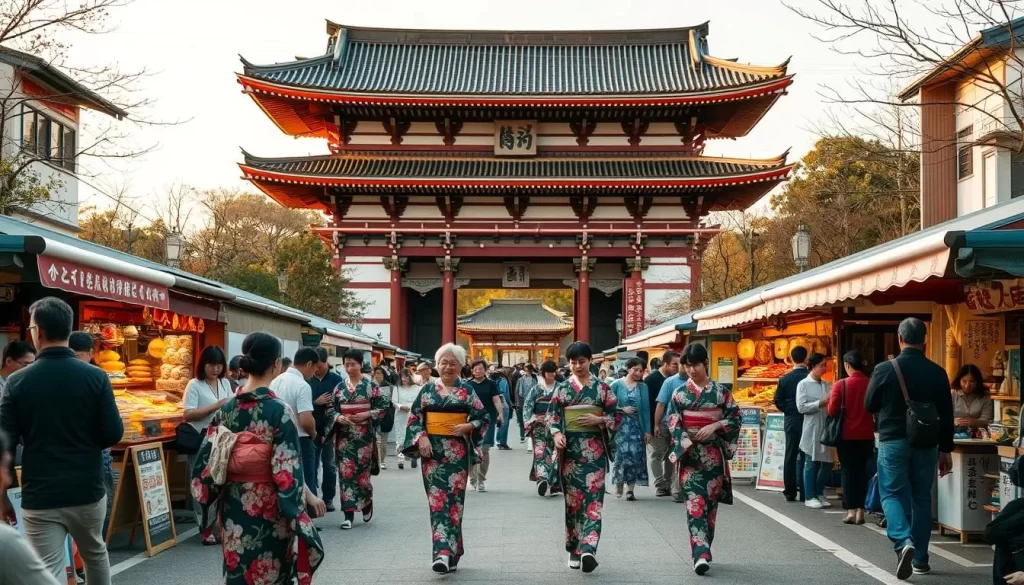
What to Wear and Bring to Wakayama Festivals
To make the most of your visit to Wakayama festivals, it’s essential to know what to wear and bring along. The key to a comfortable festival experience is dressing according to the season. Forsummer festivals, lightyukata(summer kimono) is recommended due to the hot weather. In contrast,winter celebrationsrequire warm layers to keep you cozy.
When it comes to what to bring, essentials include fans, towels, water bottles, and comfortable footwear. You may also consider bringing foldable seats for parades, small change for food stalls, and bags for souvenirs.
| Festival Type | Recommended Clothing | Essential Items |
| — | — | — |
| Summer | Light yukata | Fans, water bottles |
| Winter | Warm layers | Thermal wear, gloves |
| Spring/Autumn | Comfortable clothing | Comfortable footwear, towels |
After a day of festivities, you can unwind at a nearbyhot springbath. If you wish to dress like locals, there are opportunities to rent or purchase traditional Japanese attire for thefestivalday.
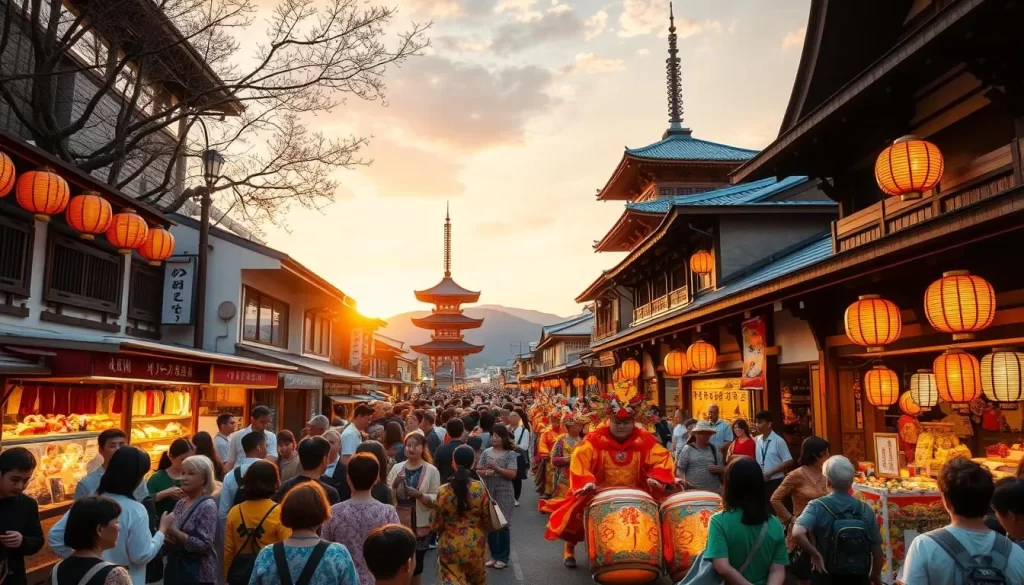
Planning Your Visit: Best Times to Experience Wakayama’s Festivals
The prefecture of Wakayama is alive with festivals throughout the year, each offering a unique cultural experience. To make the most of your trip, it’s crucial to plan your visit around these events.
Wakayama’s festival calendar is filled with exciting happenings, from the vibrant summer festivals to the serene winter illuminations. To catch the best events, consider visiting during the peak festival seasons.
Summer is a great time to experience the summer festivals, while other seasons offer their own unique charm. By understanding the festival calendar, you can create an itinerary that allows you to experience multiple festivals and events during your stay.
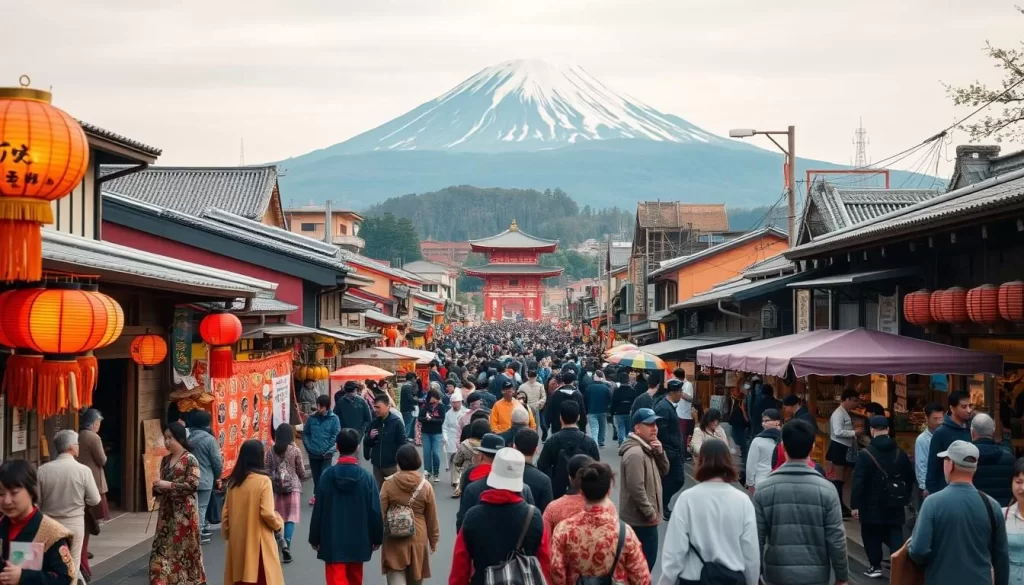
By planning ahead, you can ensure that you don’t miss out on the festivals that interest you most, making your trip a memorable one that spans the best of what Wakayama has to offer in a particular year.
Where to Stay During Festival Seasons
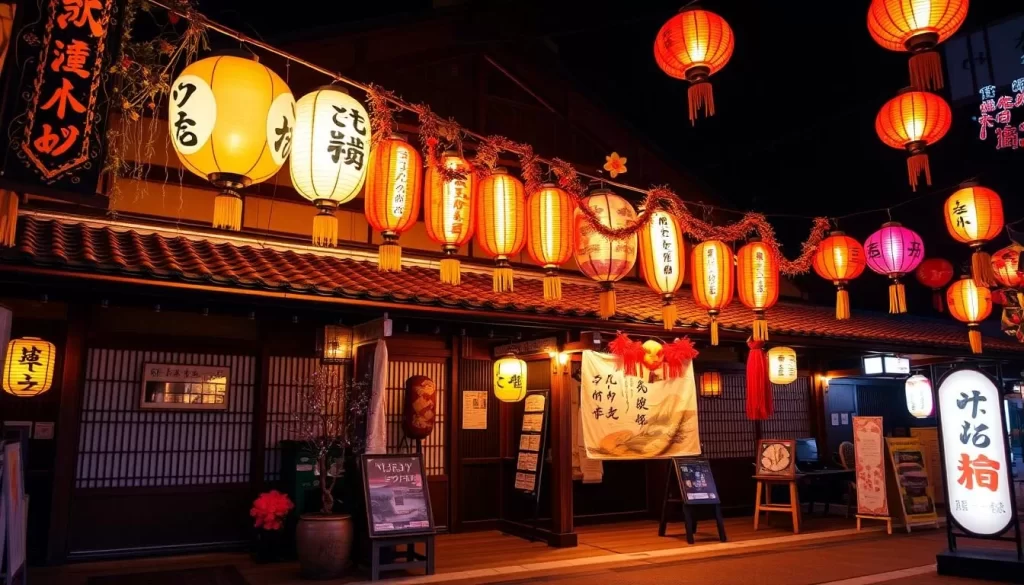
The key to enjoying Wakayama’s vibrant festivals lies in choosing the right place to stay. Visitors have a range of accommodation options to suit their preferences, from traditional ryokan inns that offer a glimpse into Japan’s cultural heritage to modern hotels that provide comfort and convenience.
One unique opportunity is to stay in temple lodgings, known as shukubo, at Mount Koya. With over 100 temples, 52 of which offer shukubo, visitors can experience the daily life of Buddhist monks, participating in rituals like meditation and sutra writing. This immersive experience is a highlight for many visitors.
It’s essential to book your accommodations well in advance, especially for major festivals, as the town can quickly reach capacity. If the festival town is fully booked, consider alternative lodging options in nearby areas. Many of these locations offer convenient transportation links, making it easy to visit the festival venues during the day or enjoy the late-night events.
Conclusion: Embracing the Festival Spirit of Wakayama
Experiencing the festivals of Wakayama Prefecture is a journey into the heart of Japanese culture and tradition. The festivals held throughout the year offer a rich tapestry of cultural experiences, from solemn religious ceremonies to joyous community celebrations featuring dance and musical performances. By participating in these events, you can transform your travel experience into a meaningful cultural immersion. As you place yourself in the midst of these vibrant celebrations, you’ll gain a deeper understanding of Japan beyond the typical tourist attractions. This unique experience will inspire you to plan your visit to Wakayama, timing your trip to coincide with one of the many festivals that take place throughout the year.
The above is subject to change.
Check back often to TRAVEL.COM for the latest travel tips and deals.
